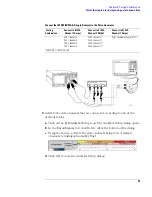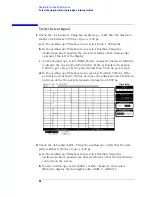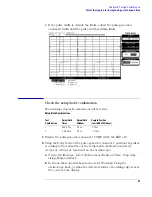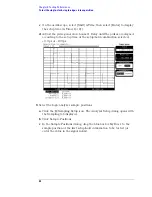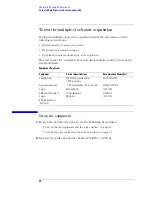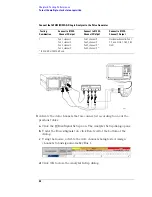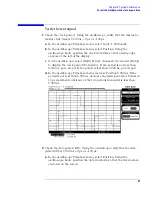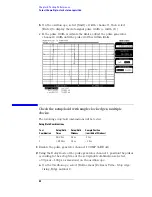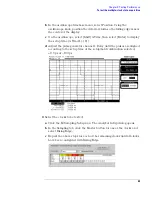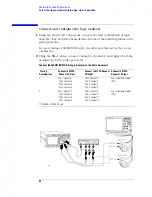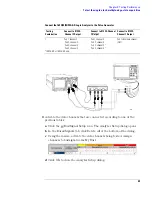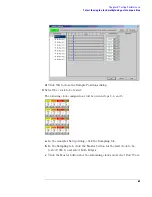
51
Chapter 3: Testing Performance
To test the multiple-clock state acquisition
Verify the test signal
1
Check the clock period. Using the oscilloscope, verify that the master-to-
master clock time is 5.000 ns, +0 ps or –100 ps:
a
In the oscilloscope Timebase menu, select Scale: 1.000 ns/div.
b
In the oscilloscope Timebase menu, select Position. Using the
oscilloscope knob, position the clock waveform so that a rising edge
appears at the left of the display.
c
On the oscilloscope, select [Shift] Period: channel 2, then select [Enter]
to display the clock period (Period(2)). If the period is not less than
5.000 ns, go to step d. If the period is less than 5.000 ns, go to step 2.
d
In the oscilloscope Timebase menu, increase Position 5.000 ns. If the
period is not less than 5.000 ns, decrease the pulse generator Period in
10 ps increments until one of the two periods measured is less than
5.000 ns.
2
Check the data pulse width. Using the oscilloscope verify that the data
pulse width is 3.000 ns, +0 ps or
−
100 ps:
a
In the oscilloscope Timebase menu, select Position. Using the
oscilloscope knob, position the data waveform so that the waveform is
centered on the screen.
Summary of Contents for 1680 series
Page 13: ...13 Chapter 1 General Information Dimensions 1680A AD Series 1690A AD Series...
Page 74: ...74 Chapter 3 Testing Performance Performance Test Record...
Page 142: ...142 Chapter 6 Replacing Assemblies 1690A AD series disassembly assembly...
Page 172: ...172 Chapter 8 Theory of Operation Self Tests Descriptions...
Page 174: ......



